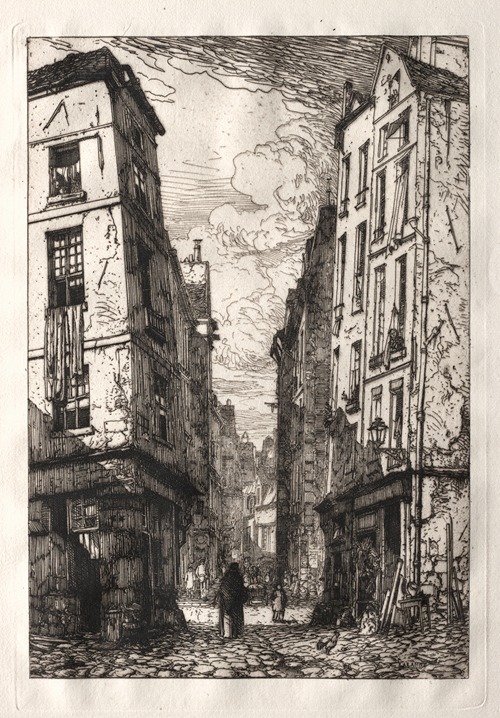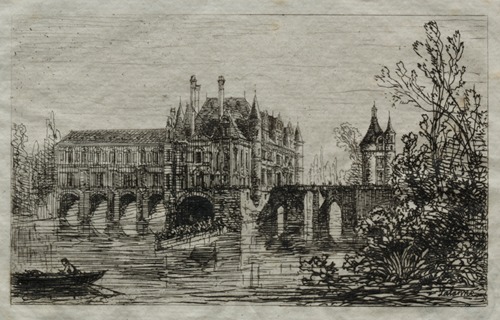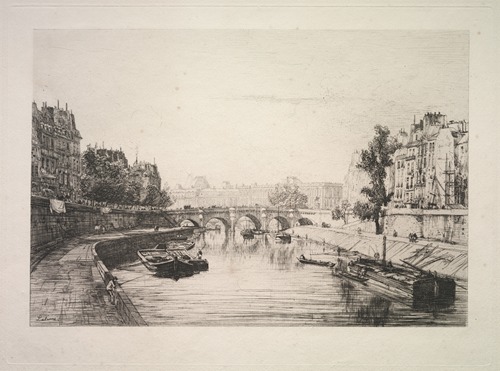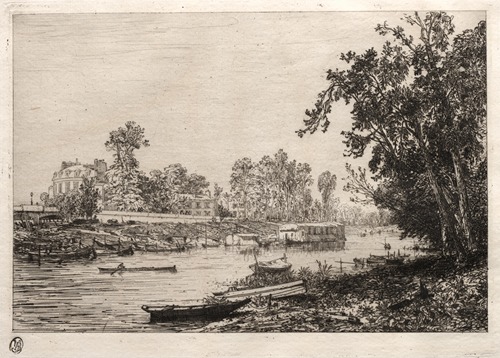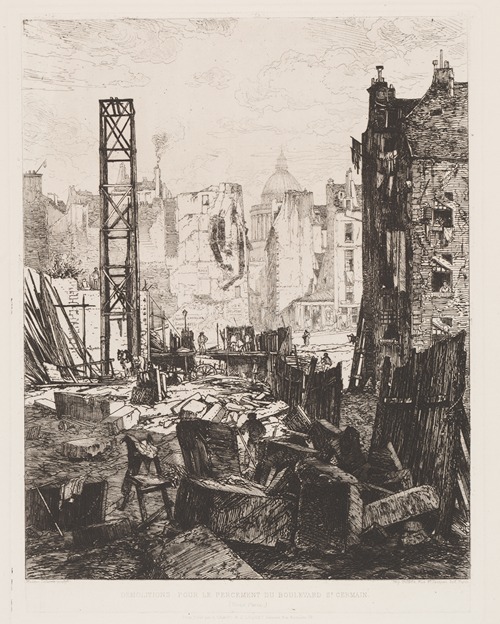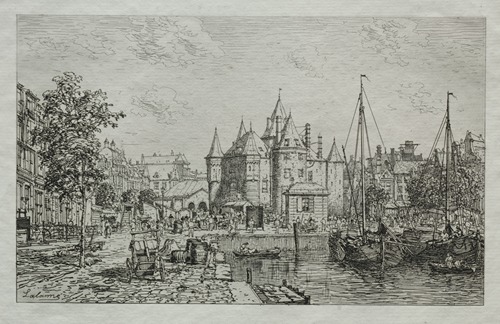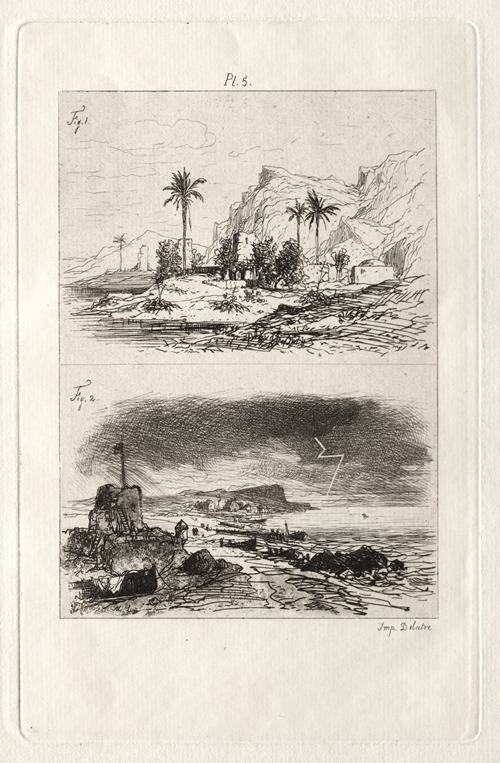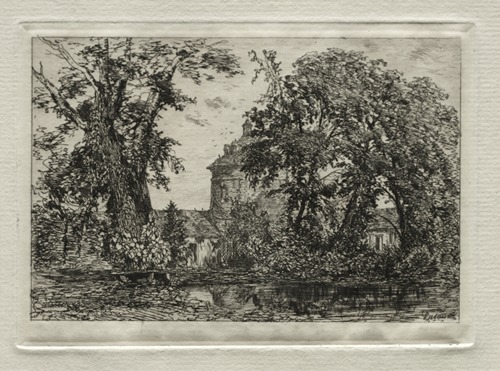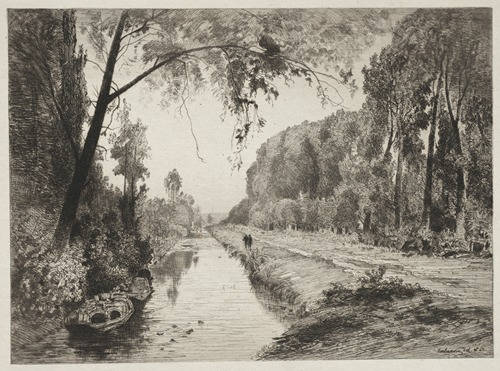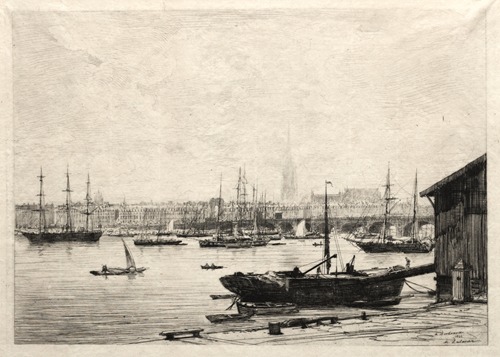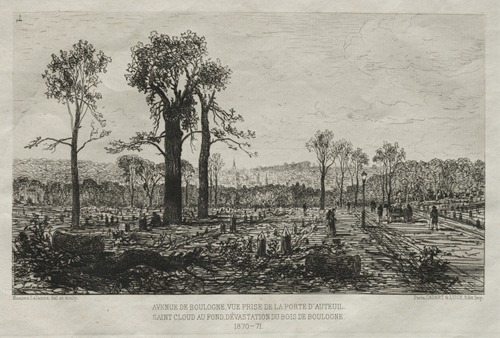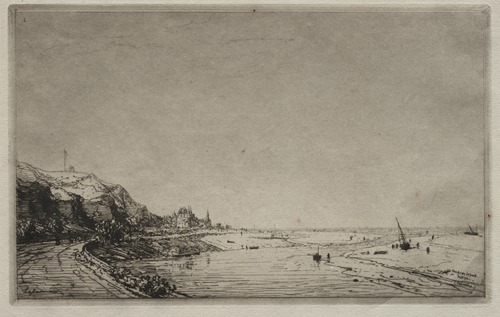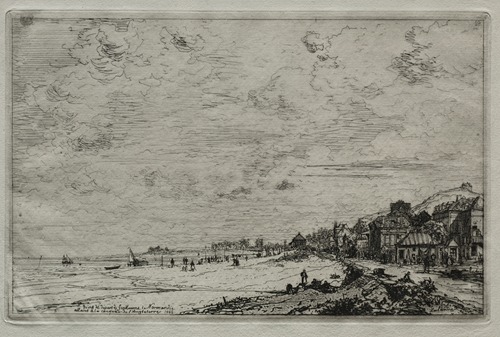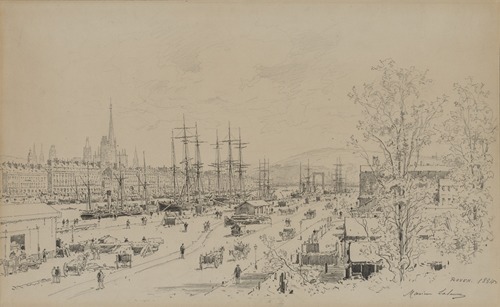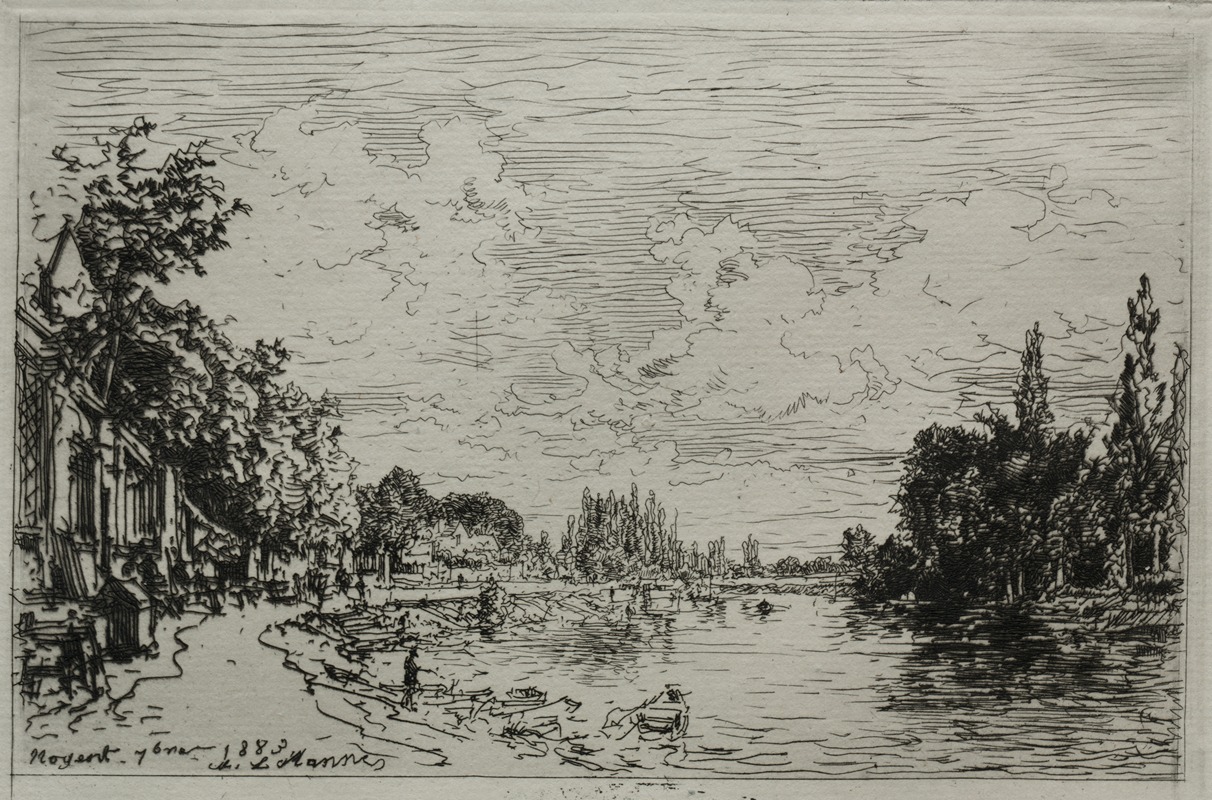
François Antoine Maxime Lalanne was a French artist known for his etchings and charcoal drawings (fusain).
Maxime Lalanne was born in Bordeaux on November 27, 1827, to Anne (previously Anne Cecile Gellibert) and Antoine Lalanne. His father was a civil servant who rose to the position of clerk of the first chamber of the Court of Appeals.
Maxime Lalanne first pursued classical and traditional studies at the l'institution Oré, where he learned drawing from Saulnier. He received his Bachelor of Letters degree in 1848. Although his artistic talent was noted by his comrades and teachers, Lalanne pursued a career in law rather than in art.
Lalanne drew in his spare time, perhaps under Fozembas, while clerking as a notary. In 1850, he exhibited six drawings (pencils and pastels) at the eighth Exposition of the Philomathique Society in the Palais de Justice. The prodigious Léo Drouyn noticed his work and urged him to persevere. Reporting on these works, the newspaper La Tribune described him as "richly gifted" and his drawing as "first rate". Lalanne was awarded a bronze medal for his work.
Shortly thereafter, Lalanne vacationed in Cénon and returned to Bordeaux with dozens of charcoal drawings of the countryside which, Marionneau reported, were remarkable. His friends encouraged him to abandon his law studies and to pursue his art exclusively.
In 1852, Lalanne followed their advice and left Bordeaux for Paris and the studio of Jean François Gigoux (with whom Lalanne remained close throughout his life). Lalanne's ties to Bordeaux remained strong: he exhibited 640 works there in a retrospective in 1874 and donated proofs of all his etchings to the city in 1875 and 1882. But regardless of those ties, Lalanne became and remained a Paris artist who lived, worked and taught chiefly in Paris until retiring to Nogent-sur-Marne in 1885.
Lalanne made his appearance at the Salon in Paris in 1852 with two charcoal drawings, which he continued to submit throughout his career. Charcoal had only been recently recognized by the Salon as an independent category, and was very popular for both its novelty and expressiveness. Lalanne's reputation in the medium is evidenced by his well-received treatise on the subject, Le Fusain. The importance of drawing to Lalanne is without doubt — at his death the number of Lalanne's drawings in public and private hands exceeded 1200.
Lalanne's print debut was in 1853—in lithography rather than etching. Lalanne began etching for Alfred Cadart in 1862 as one of the founding members of Cadart's 160-member Société des Aquafortistes (formed in September 1862), and his work was among the first published and distributed by the Société – Rue des Marmousets (published in November 1862 as plate 15). Lalanne made his etching debut at the Salon in 1863, submitting three street scenes (all of which would appear in Cadart publications).
Lalanne's etchings struck a chord. He received awards from the Salon for etching in 1866, 1873 (3ème classe), 1874 (3éme classe) and was decorated as Chevalier de la Légion d’Honneur in 1875. He was also knighted as Chevalier of the Order of Christ by King Fernando of Portugal (who, perhaps not surprisingly, was one of the 160 members of Cadart's Société des Aquafortistes).
Lalanne arrived on the scene at an opportune moment, for both himself and for the Cadart publishing house. During the 20-year period in which they worked together (from 1862 to 1881), Lalanne produced over 145 etchings, and the Cadart house issued over 80 of them (often more than once) in numerous Cadart publications.
While the impressionists were rebelling against artistic convention and the Salon, Lalanne remained ever faithful to it, and the Salon accepted and exhibited over 120 etchings by Lalanne from 1863 to 1886. It was because of this loyalty (and the resulting friendships) that Lalanne continued to be a member of the jury of the Salon, for painting, even (according to Marionneau) after illness prevented his full participation.
That illness was Lalanne's 10-year struggle with osteomalacia, a crippling bone disease that causes bone softness and disintegration.
Lalanne continued working until he died, with charcoal in his hand, on 29 July 1886, shortly after completing a drawing for his cousin, the author Leopold Lalanne.
He was buried in Nogent-sur-Marne on August 1. His remains were moved on September 25, 1889, to the vault reserved for artists in Bordeaux. A monument by Pierre Granet was erected in the public garden in Bordeaux on June 26, 1897. Only the pedestal and bust remain (its bronze having been pillaged by the Nazis).
